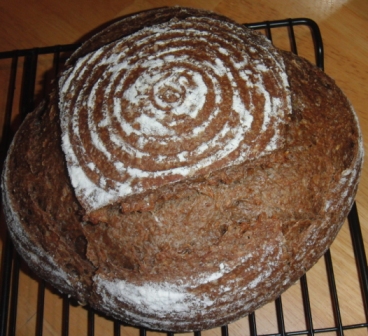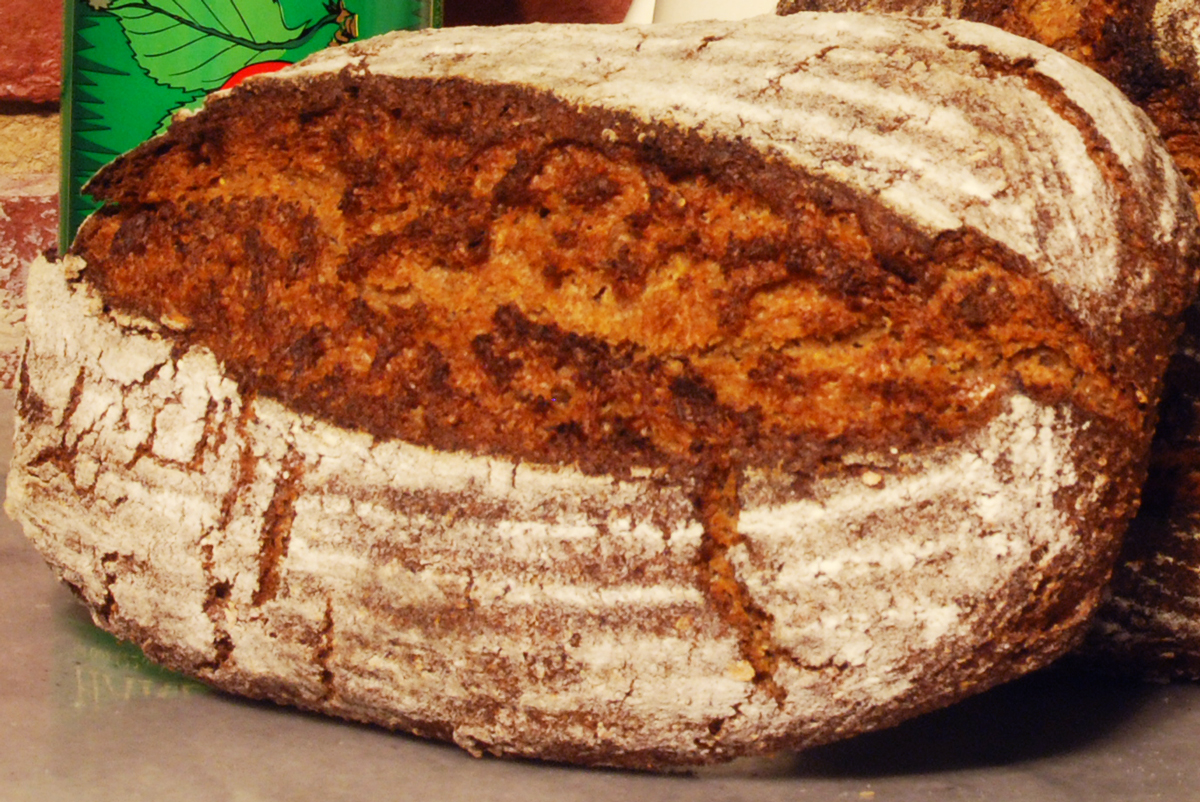
After 4 Fresh Loafians recent trip to KA flour where they took the rye class from master baker Jeffrey Hamelman and the recent spate of posts on altus, my apprentice couldn’t help but devise a baking test to see if we could tell the difference, taste wise, when altus was added to a high percent rye and 100% whole grain bread.
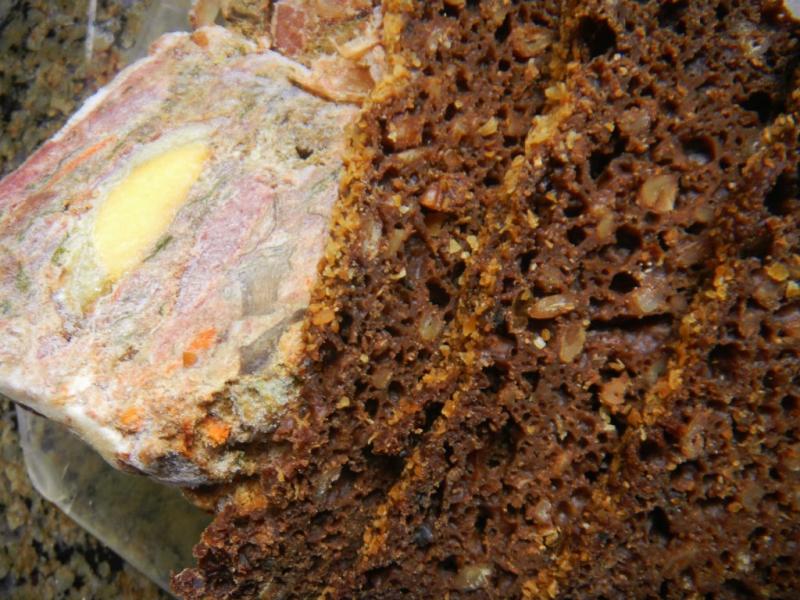
Perfect bread holder for home made Pate Maison.
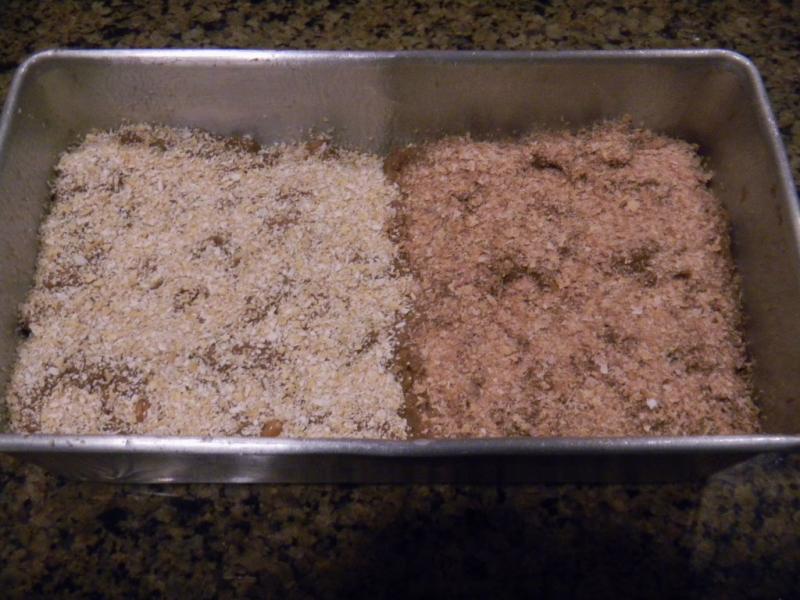

Our last bake was a test on ‘old dough’ that proved old dough makes a difference in taste that is noticeable and really quite profound. Normally we would put altus in high percent rye bread, if we have it, but have never baked the same recipe at the same time under the exact same conditions with and without altus to determine first hand if there really was a noticeable taste difference.

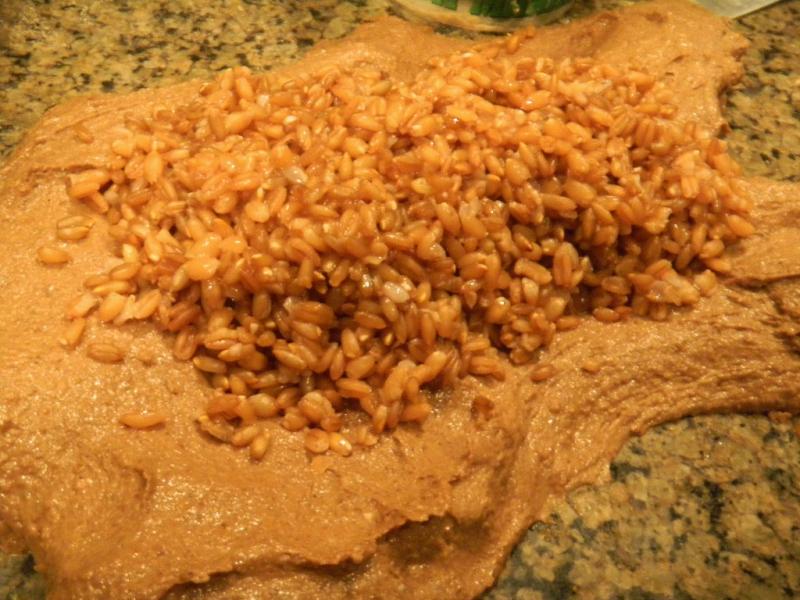
We would have made a 100% whole rye bread for this test but didn’t have enough rye berries to grind up. We decided to use whole spelt berries for 50% of the mix and bake it like it was pumpernickel, that had real pumperdime berries cut in half - long, low and slow, to bring out the dark color. The instant coffee, cocoa, molasses, barley malt, honey and red malt also helped to turn this loaf dark.


The altus we used came from this bread - Multigrain SD/YW Brown Bread with Aromatic Seeds and Multi-Grain Scald which was also a multi-grain and YW/SD combo levain bread sort of similar to this one.

Today's lunch sandwich featuring the bread we used for the altus in todays bake that is still in the oven going on 7 hours.
You want to start the levain and scald the day before you bake. We had a mainly rye and spelt 100% whole grain starter, that had been developed to its peak for the last bake. It had been in the fridge for a coupe of days putting on some more sour. It was used to make the combo levain with 30 g of YW - a tiny amount in the scheme of things but YW really makes a huge difference to open the crumb in heavy whole grain breads.

All of the cracked and meal varieties of rye and spelt, half the total flour amounts used for the levain, along with some whole rye and spelt flour was used in the 1 build. The rye and spelt berries were soaked overnight for 12 hours and then simmered for 10 minutes and allowed to cool. The excess soaker / scald water was used to soften the altus so none of the flavor was lost.


It took about 12 hours for the levain to double on the counter. While that was happening, we autolysed the dough flour, salt, all the add-ns (less the altus and the scalded berries) using excess soaker water for the liquid for 4 hours. We like longer autolyse times for whole grain breads. We also see no difference if the salt is included to the autolyse or not… so we always put it in.

Once the autolyse and the levain came together we mixed the heavy 76 % hydration mass with a big metal spoon to try and get things acquainted before turning it out on the counter and doing 10 minutes of French slap and folds when the dough really came together nicely from a structure point of view but still very sticky.

The dough was rested for 15 minutes before the first of (2) S&F’s were completed on 15 minute intervals. The scald was incorporated in the first one and the seeds in the 2nd one. Then the dough as divided in two with one dough 72 g more than the other since the smaller dough would have 72 g of soaked altus added to it.

Once the scald was added the dough felt wetter than a 76% hydration dough because of the excess scald water carried along with it – even after draining and running a paper towel through the berries.
15 minutes later, the altus went into half and a minute of slap and folds was used to distribute it properly. A few slap and folds were also performed with the other half to get it back into better shape gluten wise.

We then panned each into half of a PAM sprayed large metal loaf pan and covered the non altus side with the lighter colored oat bran and the altus side with the darker wheat bran to mimic their actual color since the altus had made that side darker.

We then covered in oiled plastic wrap and allowed it to proof on the counter for 30 minutes before refrigerating it for a 12 hour retard at 38 F. After removing the loaf from the fridge the next morning, we allowed it to warm up and proof on the counter for 6 ½ hours at 68 F until it nearly doubled to the rim of the pan.

We covered the top with a PAM sprayed double layer of heavy aluminum foil and placed it on the 375 F mini oven’s broiler pan that was half full of water along with (2) of Sylvia’s steaming cups that were heated to the boiling in the microwave. Even though the loaf tin was covered we still wanted as much steam as we could generate in the mini.

After 30 minutes we turned the mini oven down to 350 F for 30 minutes. We continued the baking in a falling oven with steam according to the baking schedule: Many will notice that this is similar to the baking schedule for Black Pumpernickel that Hamelman uses. This one just starts a little higher


Theise were 3"pieces of pumpernickel (altus left) that we got 12 slices out of the altus side than the 11 slices we got out of the non altus side. For lunch the altus wa more moist and produced few crumbs when slicing and the non altus side was more dry and produced more crumbs when slicing. It will be altus pumpernickel from now on.
375 F - 30 minutes
350 F - 30 minutes
325 F - 30 minutes
300 F - 1 hour
275 F - 2 hours
250 F - 2 hours
225 F - 1 ½ hours
200 F - 1 ½ hours
Turn oven off and leave the bread in the oven until morning or 8 hours. Uncover and de-pan the bread. Wrap the cooled bread in cotton cloth or linen for a minimum of 24 hours - 36 hours would be better.
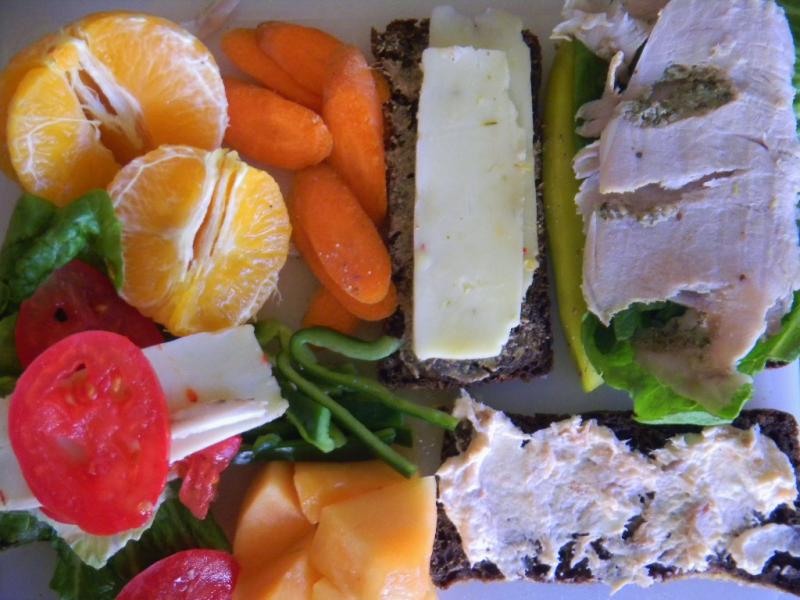
A great lunch sandwich of Pesto Infused Roasted Pork Loin with; pepper jack cheese, lettuce, tomato and homemade Dijon mustard. The fruits and veggies, include Poblano peppers cantaloupe, carrots, a homemade kosher dill pickle and a Minneola from the back yard. A piece of this bread with a schmear of grilled salmon and cream cheese was included because it was go fantastic at breakfast.

Beautiful sunrise this morning!
Please note that the altus actually used for half of this loaf was 72 wet grams not the 144 listed in the formula below. The 90 g dry and 144 g wet altus would be used in a full, non test loaf of this bread.
Crumb shots will be 24 hours from now.
The great aroma of this bread didn't start permeating the house until the temperature had been reduced to 250 F. There were some unusual things and some expected from the crust points out. First the loaf shrank a little bit while baking instead of springing. I have never used a long low slow baking schedule for this kind of bread before and have never had one shrink - maybe this is normal?
The altus side came out of the pan much wetter than the non altus side and it was more caramelized. We have never had a bread come out of the pan this wet before but this too may be normal? When the aluminum foil lid came off, the aroma was incredibly pungent and pervasive. It sure smells like a very nice black pumpernickel and I can't wait to slice into it. But we will wait, even though my apprentice doesn't want to her being German and this loaf dear to her heart. The loaf is now resting in its cotton cocoon for 24 hours - making it 32 hours after it finished baking before we will slice it.
After baking and slicing the color difference went away, the non altus inside was more open with larger holes. the altus side was open too but the holes more even throughout. The crumb was glossy and moist. The YW really helped to open the crumb and make it lighter than just about any other bread of this type that I have made, seen or eaten. Great taste - less weight :-)
The long low and slow bake at the end produced a finished temperature of exactly 205 F . Amazing! This loaf was perfectly baked and the taste was just the best we have ever experienced. The difference between the altus and no altus was slight though not nearly as great as we would have expected. The altus side had a deeper and more complex flavor though and next time we have this bread for the altus. What a great loaf of pumpernickel!
Formula
100% Whole Grain Rye and Spelt Sourdough - The Altus Test | | | |
| | | |
Starter | Build 1 | % | |
SD Rye & Spelt Starter | 15 | 3.83% | |
Whole Rye, Meal & Cracked | 80 | 20.43% | |
Yeast Water | 30 | 7.66% | |
Whole Spelt, Meal & Cracked | 80 | 20.43% | |
Water | 130 | 33.21% | |
Total Starter | 335 | 85.57% | |
| | | |
Starter | | | |
Hydration | 100.00% | | |
Levain % of Total | 34.50% | | |
| | | |
Dough Flour | | % | |
Dark Rye | 112 | 28.61% | |
Whole Spelt | 112 | 28.61% | |
Dough Flour | 224 | 57.22% | |
| | | |
Salt | 7 | 1.79% | |
Water | 150 | 38.31% | |
Dough Hydration | 66.96% | | |
| | | |
Total Flour | 391.5 | | |
Water | 317.5 | | |
T. Dough Hydration | 81.10% | | |
Whole Grain % | 100.00% | | |
| | | |
Hydration w/ Adds | 76.20% | | |
Total Weight | 971 | | |
| | | |
Total Weight does not include added water from the scald and altus |
| | | |
Add - Ins | | % | |
Barley Malt | 6 | 1.53% | |
Molasses | 6 | 1.53% | |
Honey | 6 | 1.53% | |
Red Rye Malt | 10 | 2.55% | |
Rye and Spelt Altus | 90 | 22.99% | |
Coffee Cocoa | 20 | 5.11% | |
Spice Seeds | 20 | 5.11% | |
VW Gluten | 7 | 1.79% | |
Total | 165 | 42.15% | |
| | | |
Altus weighed 144 g after adding soaker water to soften |
Spice Seeds - corriander, black and brown caraway, anise & fennel |
| | | |
Scald | | % | |
Spelt | 45 | 11.49% | |
Rye | 45 | 11.49% | |
Total Scald | 90 | 22.99% | |
| | | |
Scald weighed 188 g when incorporated | | |



